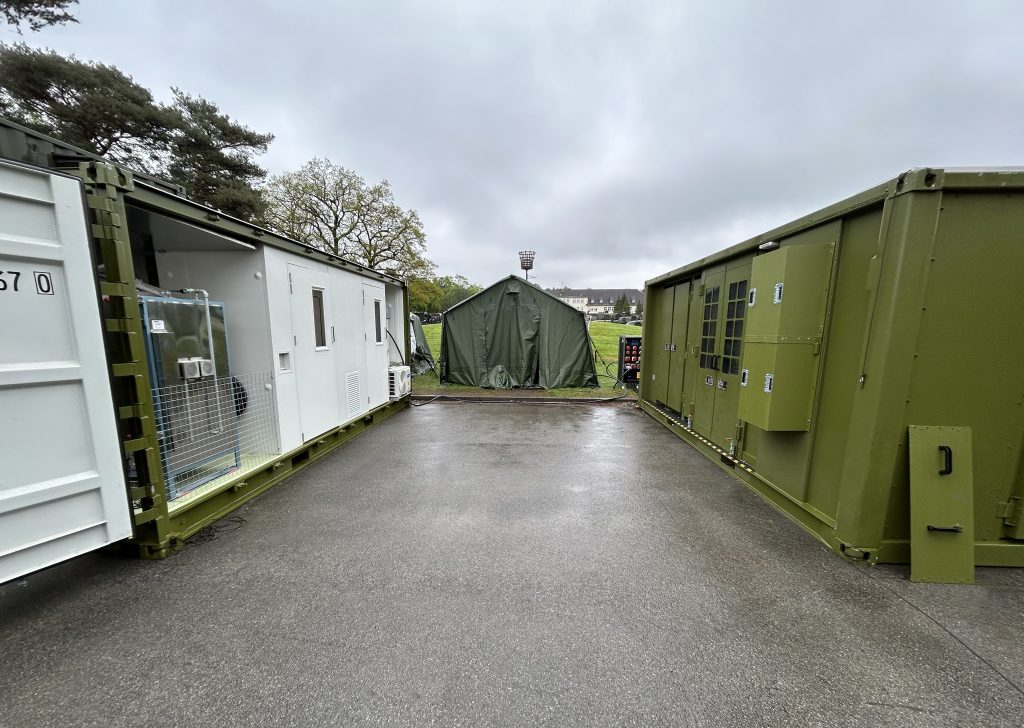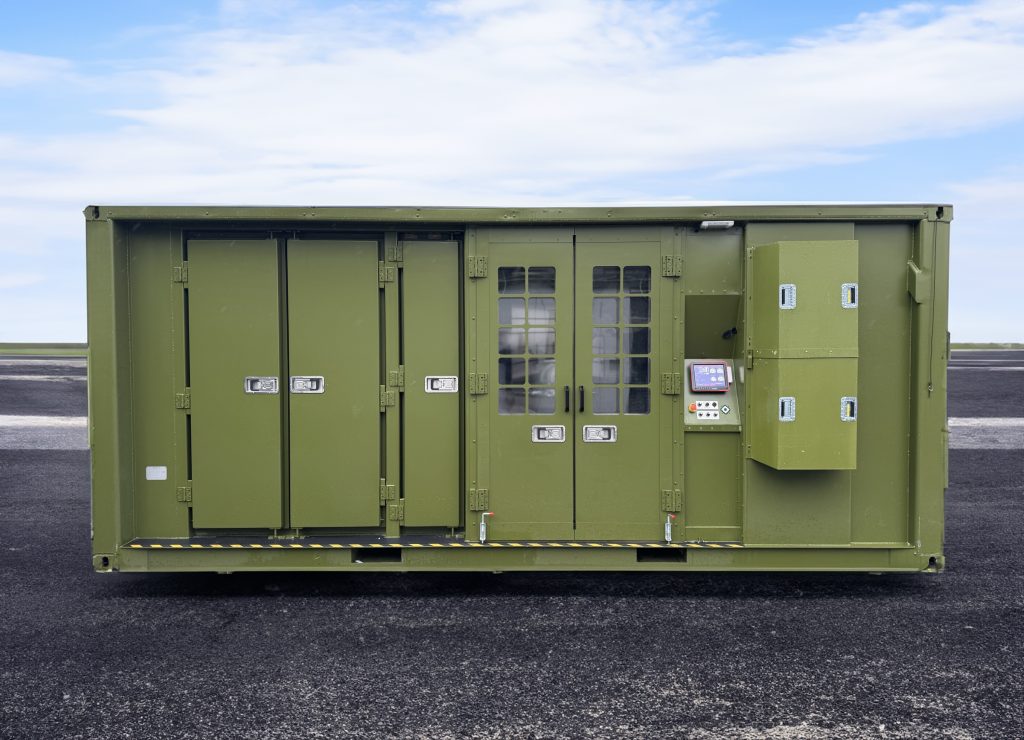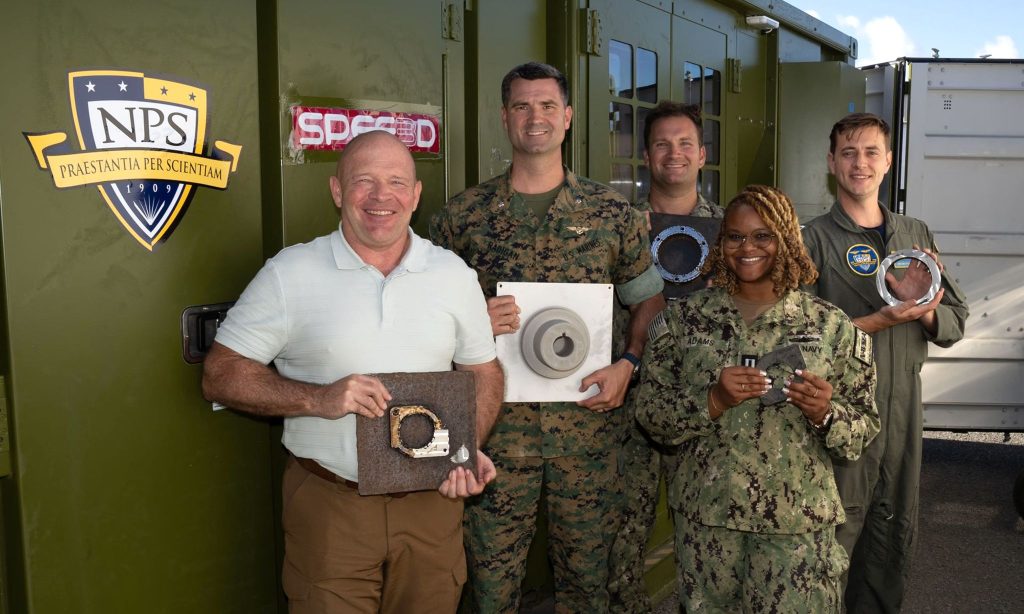Australian metal 3D printer manufacturer SPEE3D has announced the successful completion of its participation in the Rim of the Pacific (RIMPAC) maritime military exercise.
SPEE3D deployed its Expeditionary Manufacturing Unit (EMU) in Trident Warrior, the experimental portion of RIMPAC, at the US Marine Corps Air Station in Kaneohe Bay, Hawaii.
The company 3D printed 11 cast-equivalent metal parts from aluminum and stainless steel, leveraging its cold spray additive manufacturing (CSAM) and post-processing technology. The material properties of these repair and replacement parts will now be studied to assess the EMU’s viability for maintaining defense equipment in contested environments.
The United States Navy was a major adopter of additive manufacturing at the exercise. According to Byron Kennedy, CEO of SPEE3D, RIMPAC is “the largest distributed advanced manufacturing demonstration the Department of Defense (DoD) has ever conducted to date.”
He added that the US DoD shares the firm’s goals to train the military in 3D printing and implement additive manufacturing. Kennedy believes this technology offers value in 3D printing “crucial metal parts at the point of need to support modernization and warfighter readiness.”

3D printing at RIMPAC 2024
40 ships, 150 aircraft, three submarines, 14 land-based armed forces and 25,000 personnel from 29 nations participated in the international military exercise. This reportedly made it the world’s largest global series of naval drills.
During Trident Warrior, the EMU was tested by a team of engineers from the US Consortium for Advanced Manufacturing Research and Education (CAMRE), part of the Naval Postgraduate School.
Launched earlier this year, the Expeditionary Manufacturing Unit combines SPEE3D’s XSPEE3D cold spray 3D printer and SPEE3Dcell post-processing unit. Deployable to remote locations, the containerized system allows military forces to quickly produce metal spare parts where they are needed.
By employing cold spray 3D printing, also known as Supersonic Particle Deposition (SPD), the XSPEE3D can quickly fabricate large and fully dense metal parts. Boasting a build rate of 100g/minute, the 3D printer can produce components up to ⌀0.9m x 0.7m in size. This is reportedly between 100 and 1,000 times faster than other metal 3D printers on the market.
The SPEE3Dcell is a fully-equipped mobile post-processing unit featuring heat treatment furnaces, a CNC three-axis mill, tooling, and testing equipment. Heat treatment is essential for manufacturing military spare parts. It ensures 3D printed components possess good mechanical properties, are strong, and can be machined.

At RIMPAC, CAMRE sought to demonstrate that 3D printing can secure military supply chains by reducing the delivery time of critical parts from days to hours. Additionally, SPEE3D worked alongside the consortium to uncover best practices for 3D printing in expeditionary environments.
The CAMRE team successfully leveraged the EMU to 3D print 11 cast-equivalent replacement parts for Army, Navy, Air Force, Marine, and Coast Guard applications.
Lt. Col. Michael Radigan is a member of the Marine Innovation Unit and was the US Government lead on the CAMRE team for Trident Warrior 24. He stated that CAMRE “facilitates getting the latest in advanced manufacturing into operational settings and finds ways to unlock additional capabilities.”
In addition to the EMU, the US Navy employed Snowbird Technologies’ SAMM Tech hybrid DED manufacturing system at RIMPAC 2024. This containerized 3D printer combines Meltio’s metal wire-directed energy deposition (DED) technology with a FANUC-controlled CNC system. As such, metal parts can be 3D printed, milled and finished on the same machine.
During the exercise, the hybrid manufacturing platform was installed aboard USS Somerset (LPD-25), a San Antonio-class amphibious transport dock.

Additive manufacturing enhances warfighting capabilities
Militaries around the world are increasingly leveraging additive managing to enhance the availability of critical warfighting equipment
Indeed, RIMPAC 2024 was not the first time the US DoD has adopted additive manufacturing. Earlier this year, the US Navy contracted rocket engine manufacturer Ursa Major to design, manufacture and hot-fire test a 3D printed solid rocket motor (SRM) prototype for its Standard Missile (SM) program.
The company is leveraging its additive manufacturing-powered Lynx technology to develop a new generation of SRMs optimized for manufacturability and reliability. It is hoped that this will allow the US to meet the growing demand for SRMs as it restocks its domestic inventories and supports Ukraine’s ongoing war efforts.
Elsewhere, the British Army 3D printed spare parts in the field for the first time. It leveraged metal and polymer 3D printers at Steadfast Defender, NATO’s largest military exercise since the Cold War.
9 Theatre Support Battalion, Royal Electrical and Mechanical Engineers (9 REME) leveraged the 3D printers to replace damaged or missing components for old vehicles, such as Land Rovers. These included jerry cans, brackets for communications systems, and mounts found inside engine bays.
On the metal side, the British Army employed an XSPEE3D unit which it purchased last year. An unnamed FDM 3D printer, or “polymer maker space system,” was also used. This was placed on the back of a lorry, allowing it to be transported to the point of need.
Want to help select the winners of the 2024 3D Printing Industry Awards? Join the Expert Committee today.
What does the future of 3D printing hold?
What near-term 3D printing trends have been highlighted by industry experts?
Subscribe to the 3D Printing Industry newsletter to keep up to date with the latest 3D printing news.
You can also follow us on Twitter, like our Facebook page, and subscribe to the 3D Printing Industry Youtube channel to access more exclusive content.
Featured image shows members of the CAMRE team with the XSPEE3D 3D printer at RIMPAC. Photo via the Naval Postgraduate School.


